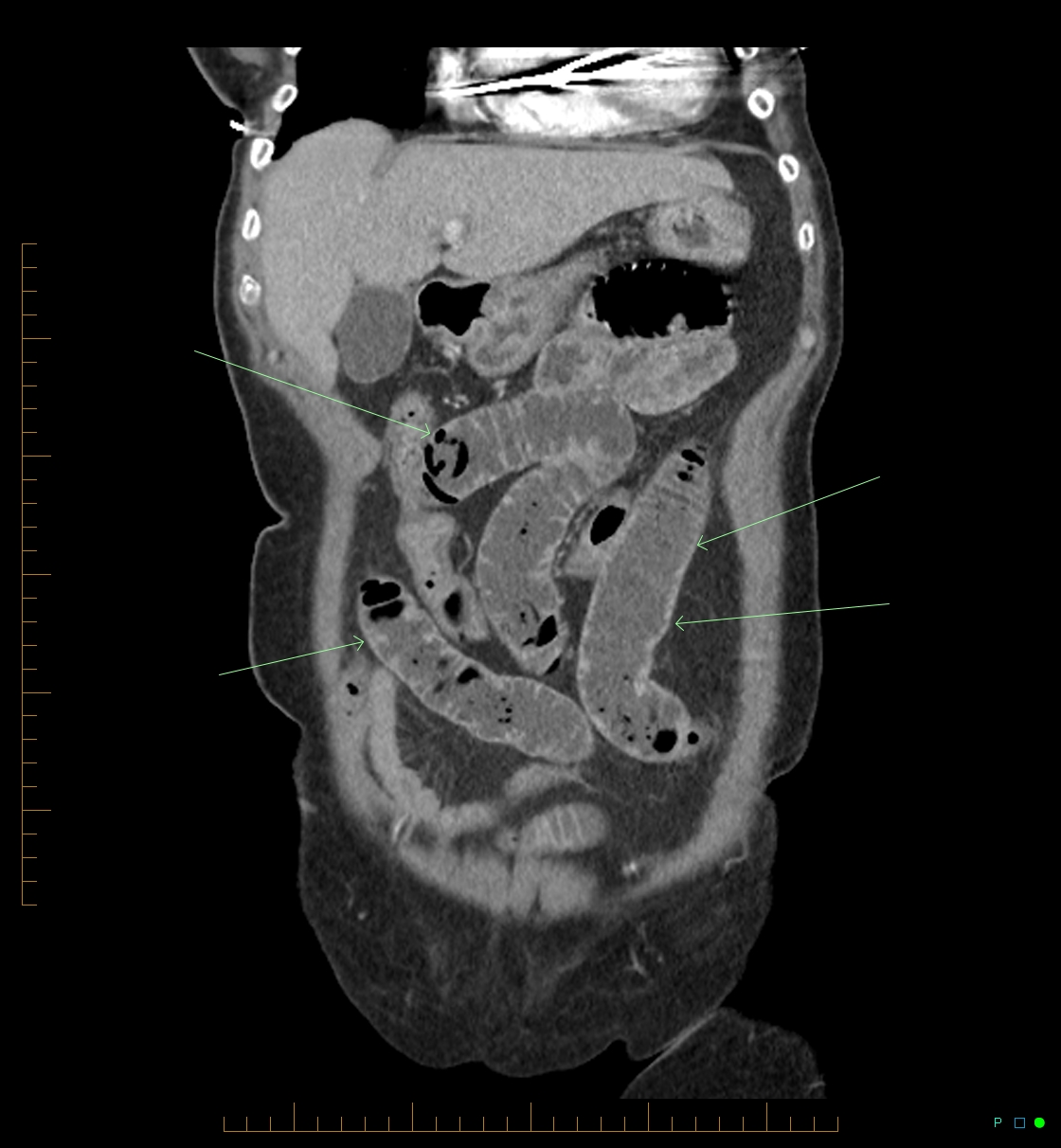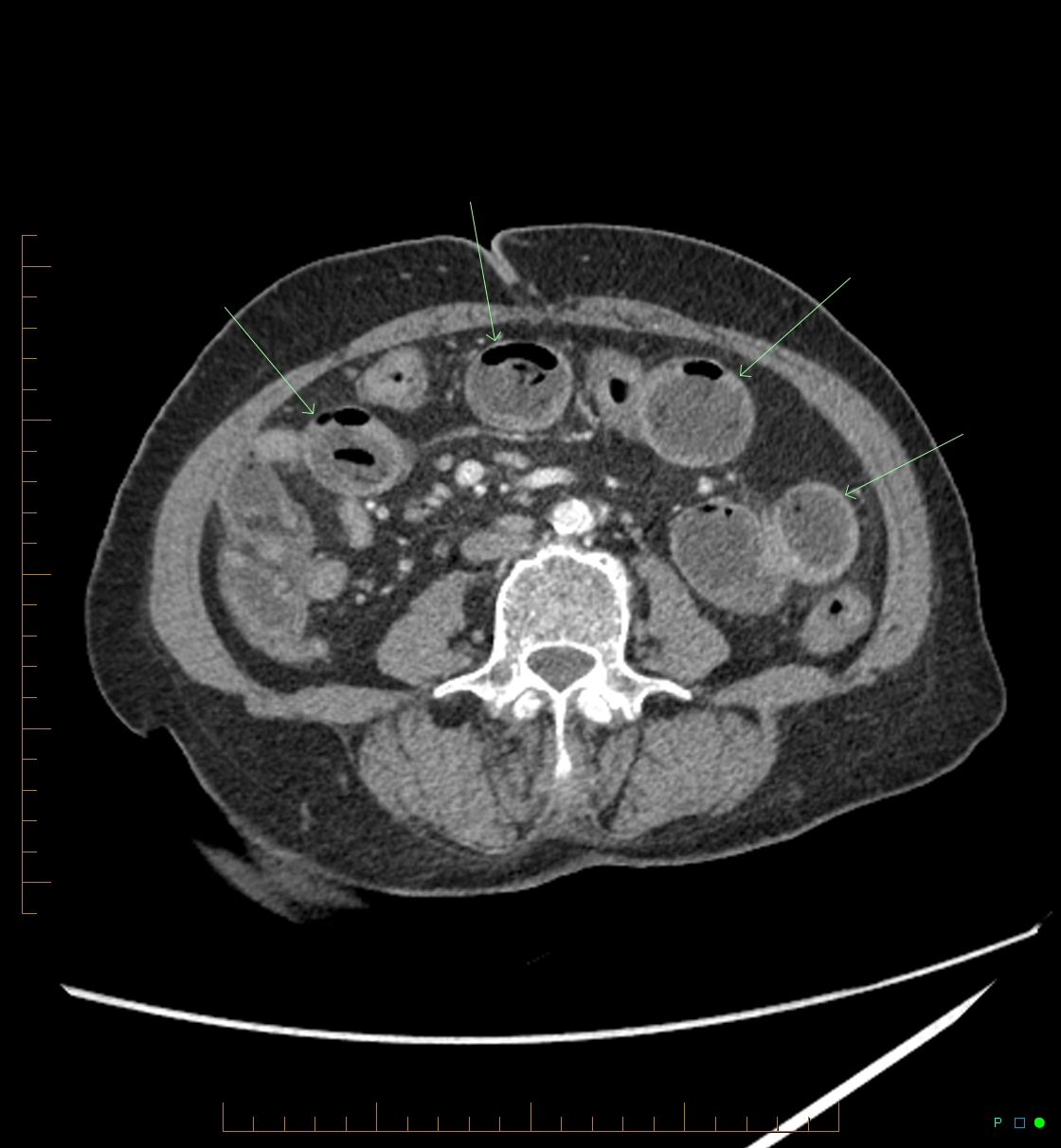Monday Poster Session
Category: Small Intestine
P4152 - A “Bezoar” Set of Events: A Case of Small Bowel Obstruction Due to Dried Apricots Bezoar
Monday, October 27, 2025
10:30 AM - 4:00 PM PDT
Location: Exhibit Hall

Raahi Patel, DO
Franciscan Health Olympia Fields
Chicago, IL
Presenting Author(s)
Raahi Patel, DO1, Varshita Goduguchinta, DO1, Navin Naik, DO2, Filip Jelenak, DO1, Hosam Khayal, MD1
1Franciscan Health Olympia Fields, Olympia Fields, IL; 2Franciscan Health Olympia Fields, Chicago, IL
Introduction: Bezoars are conglomerates of indigestible material that accumulate in the gastrointestinal tract, often leading to symptoms such as pain, obstruction, or nausea. Small bowel obstruction due to bezoars are less frequent and often associated with prior gastric surgery or impaired motility. Apricot pits, though rarely reported, can act as a nidus for bezoar formation due to their hard, fibrous structure. We present a rare case of small bowel obstruction caused by an apricot pit-induced bezoar, emphasizing diagnostic challenges and management.
Case Description/
Methods: A 66 year old female with a past medical history of coronary artery bypass grafting, tubal ligation and ischemic cardiomyopathy presented with abdominal pain, nausea and vomiting. Labs on arrival were essentially unremarkable, however x-ray and computed tomography (CT) scan of the abdomen revealed small bowel obstruction of the lower abdomen. General surgery was consulted, a nasogastric tube was inserted for bowel decompression and serial abdominal exams were conducted. Due to persistent and worsening symptoms, the general surgery team performed an exploratory laparotomy and removed a foreign body that appeared to be a clump of dried apricots. However, the patient's symptoms continued to worsen and was then taken back to surgery two days later where they found a bezoar and ultimately removed it. Patient’s abdominal pain, nausea, and vomiting dramatically improved following the two exploratory laparotomies. She was discharged home in stable condition.
Discussion: Bezoars account for less than 4% of small bowel obstructions, with phytobezoars being the most common type. Apricot pits are an unusual cause but can lead to obstruction, especially in patients with prior gastrointestinal surgery or delayed motility. In this case, the patient presented with signs of mechanical obstruction, and imaging revealed an intraluminal mass. Surgical intervention is required in up to 50% of small bowel bezoar cases, particularly when complete obstruction occurs. Endoscopic retrieval is typically not feasible for distal small bowel bezoars. This case underscores the importance of considering bezoars in the differential diagnosis of small bowel obstruction, particularly in high-risk individuals.

Figure: Multiple dilated fluid-filled loops of small bowel

Figure: Multiple dilated fluid-filled loops of small bowel
Disclosures:
Raahi Patel indicated no relevant financial relationships.
Varshita Goduguchinta indicated no relevant financial relationships.
Navin Naik indicated no relevant financial relationships.
Filip Jelenak indicated no relevant financial relationships.
Hosam Khayal indicated no relevant financial relationships.
Raahi Patel, DO1, Varshita Goduguchinta, DO1, Navin Naik, DO2, Filip Jelenak, DO1, Hosam Khayal, MD1. P4152 - A “Bezoar” Set of Events: A Case of Small Bowel Obstruction Due to Dried Apricots Bezoar, ACG 2025 Annual Scientific Meeting Abstracts. Phoenix, AZ: American College of Gastroenterology.
1Franciscan Health Olympia Fields, Olympia Fields, IL; 2Franciscan Health Olympia Fields, Chicago, IL
Introduction: Bezoars are conglomerates of indigestible material that accumulate in the gastrointestinal tract, often leading to symptoms such as pain, obstruction, or nausea. Small bowel obstruction due to bezoars are less frequent and often associated with prior gastric surgery or impaired motility. Apricot pits, though rarely reported, can act as a nidus for bezoar formation due to their hard, fibrous structure. We present a rare case of small bowel obstruction caused by an apricot pit-induced bezoar, emphasizing diagnostic challenges and management.
Case Description/
Methods: A 66 year old female with a past medical history of coronary artery bypass grafting, tubal ligation and ischemic cardiomyopathy presented with abdominal pain, nausea and vomiting. Labs on arrival were essentially unremarkable, however x-ray and computed tomography (CT) scan of the abdomen revealed small bowel obstruction of the lower abdomen. General surgery was consulted, a nasogastric tube was inserted for bowel decompression and serial abdominal exams were conducted. Due to persistent and worsening symptoms, the general surgery team performed an exploratory laparotomy and removed a foreign body that appeared to be a clump of dried apricots. However, the patient's symptoms continued to worsen and was then taken back to surgery two days later where they found a bezoar and ultimately removed it. Patient’s abdominal pain, nausea, and vomiting dramatically improved following the two exploratory laparotomies. She was discharged home in stable condition.
Discussion: Bezoars account for less than 4% of small bowel obstructions, with phytobezoars being the most common type. Apricot pits are an unusual cause but can lead to obstruction, especially in patients with prior gastrointestinal surgery or delayed motility. In this case, the patient presented with signs of mechanical obstruction, and imaging revealed an intraluminal mass. Surgical intervention is required in up to 50% of small bowel bezoar cases, particularly when complete obstruction occurs. Endoscopic retrieval is typically not feasible for distal small bowel bezoars. This case underscores the importance of considering bezoars in the differential diagnosis of small bowel obstruction, particularly in high-risk individuals.

Figure: Multiple dilated fluid-filled loops of small bowel

Figure: Multiple dilated fluid-filled loops of small bowel
Disclosures:
Raahi Patel indicated no relevant financial relationships.
Varshita Goduguchinta indicated no relevant financial relationships.
Navin Naik indicated no relevant financial relationships.
Filip Jelenak indicated no relevant financial relationships.
Hosam Khayal indicated no relevant financial relationships.
Raahi Patel, DO1, Varshita Goduguchinta, DO1, Navin Naik, DO2, Filip Jelenak, DO1, Hosam Khayal, MD1. P4152 - A “Bezoar” Set of Events: A Case of Small Bowel Obstruction Due to Dried Apricots Bezoar, ACG 2025 Annual Scientific Meeting Abstracts. Phoenix, AZ: American College of Gastroenterology.
